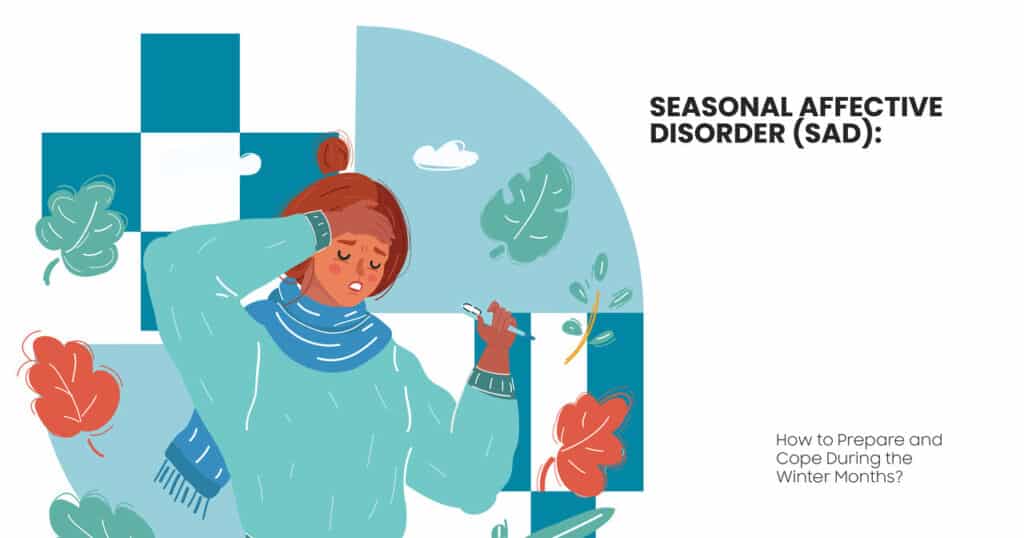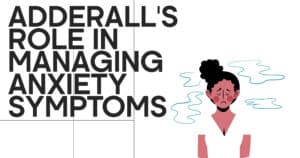Winter can be a magical time of year, but for many, it brings sadness and despair. If you’ve ever felt down during the colder months, you’re not alone. Seasonal Affective Disorder (SAD) is a type of depression that affects millions of people, typically during fall and winter when daylight hours are shorter.
Essential Takeaways
- Awareness is Key. Recognizing the symptoms and causes of SAD can help you seek help and apply effective coping strategies.
- Use Light Therapy. Bright light, whether from a lightbox or natural sunlight, is highly effective in treating SAD.
- Stay Connected. Socializing with friends and family provides crucial support, reducing isolation during winter months.
Understanding this condition can empower you to take steps to manage it effectively. In this blog post, we’ll explore the ins and outs of SAD, including its symptoms, causes, and practical coping strategies to help you thrive during the winter months.
Understanding Seasonal Affective Disorder (SAD)
What Is Seasonal Affective Disorder?
Seasonal Affective Disorder is severe and quite different from the Winter Blues Syndrome. Generally, this form of depression sets in during late fall and early winter, going off with spring and summer. It is recognized by recurring depressive episodes that tend to follow a seasonal pattern.
Compared to other forms of depression, SAD has its clear and seasonal timing. Symptoms range from mild to severe, which can interfere with one’s ability to live an everyday life, work, or any relationship one may be involved in. So, if you feel down during the short days of winter, it is worth contemplating that maybe you have SAD.
Symptoms of SAD
Symptoms of Seasonal Affective Disorder can vary widely, but they often include:
| Sadness or hopelessness | This is the hallmark of depression, and it can feel overwhelming during the winter months |
| Fatigue and low energy | Many people with SAD feel physically drained and unmotivated. |
| Changes in sleep patterns | You might find yourself sleeping more than usual or struggling with insomnia. |
| Difficulty concentrating | Tasks that once seemed manageable may feel insurmountable. |
| Weight gain or loss | Changes in appetite can lead to weight fluctuations, often characterized by cravings for carbohydrates. |
| Social withdrawal | You may feel less inclined to engage with friends or family, preferring solitude. |
Understanding these symptoms is crucial because recognizing them early can lead to more effective management strategies.
Causes and Risk Factors
The exact cause of Seasonal Affective Disorder is not entirely understood, but several factors contribute to its onset:
- Biological Factors. A drop in serotonin levels (a neurotransmitter that affects mood) during winter is thought to play a significant role. Reduced sunlight can disrupt your body’s internal clock (circadian rhythms), affecting mood and sleep patterns.
- Genetic Predisposition. Individuals with a family history of depression or bipolar disorder are at a higher risk of developing SAD. If someone in your family has experienced depression, you might be more susceptible.
- Environmental Factors. Living in areas with long winters and limited sunlight can increase one’s chances of developing SAD. If one lives in a region where daylight is scarce, the risk may be higher.
Recognizing the Signs of SAD
When to Seek Help
Recognizing when to seek help is vital. If you notice that your symptoms are affecting your daily life—making it hard to work, maintain relationships, or care for yourself—it’s time to talk to a mental health professional. Early intervention can make a significant difference.
Self-Assessment Tools
Several self-assessment tools can help you gauge the severity of your symptoms. Many mental health websites offer quizzes to help you determine whether you might be experiencing SAD. Take some time to reflect on your feelings, behaviors, and overall well-being. Self-awareness is the first step in managing any mental health condition.
Preparing for Winter: Strategies to Manage SAD
Light Therapy
One of the most effective treatments for SAD is light therapy. This method involves exposure to bright light that mimics natural sunlight, helping to regulate your body’s circadian rhythms and boost serotonin levels. Here’s how to get started:
- Choose a lightbox. Look for a light box that emits 10,000 lux, the recommended intensity for treating SAD. For safety, make sure it filters out UV rays.
- Establish a routine. Aim to use your light box for about 20-30 minutes each morning, preferably soon after waking up. Consistency is key for effectiveness.
Light therapy can significantly improve mood and energy levels, but it’s essential to consult with a healthcare professional before starting this treatment.
Outdoor Activities and Sunlight Exposure
Taking advantage of any available sunlight can be incredibly beneficial. Here are a few tips to incorporate more light into your daily routine:
- Get outside during the day. Even on cloudy days, outdoor light can positively impact your mood. Consider taking a brisk walk during your lunch break or in your garden.
- Engage in winter activities. Embrace the season by participating in outdoor winter sports like skiing, snowshoeing, or ice skating. Not only will you get some exercise, but you’ll also benefit from exposure to natural light.
Building a Routine
Creating a daily routine can provide stability and predictability during the winter months. Consider the following tips:
- Regular sleep schedule. Aim to go to bed and wake up simultaneously each day, even on weekends. This consistency helps regulate your internal clock.
- Healthy eating habits. A balanced diet can significantly affect your mood. Eat plenty of fruits, vegetables, whole grains, and lean proteins.
Coping Mechanisms During Winter Months
Mindfulness and Stress Reduction Techniques
Mindfulness practices can be an effective way to manage stress and improve overall mental health. Here are some methods to consider:
- Meditation. To help clear your mind, spend a few minutes each day focusing on your breath or using guided meditation apps.
- Deep breathing exercises. These can be particularly effective in reducing anxiety and promoting relaxation.
Connecting With Others
Don’t underestimate the importance of social connections. Building and maintaining relationships can provide essential support during challenging times. Here are some ideas to foster those connections:
| Join a support group | Many organizations offer groups specifically for individuals experiencing SAD. Sharing your experiences can provide relief and understanding. |
| Regular check-ins | Whether it’s a weekly phone call with a friend or a monthly coffee date, staying connected can combat feelings of isolation. |
Seeking Professional Help
If you find self-care strategies insufficient, don’t hesitate to seek professional help. Different therapeutic options can be effective:
- Cognitive Behavioral Therapy (CBT). This approach helps individuals identify and change negative thought patterns and behaviors associated with depression.
- Medication. In some cases, antidepressant medication can help regulate mood and alleviate symptoms. Talk to a healthcare provider to explore this option.
Lifestyle Changes to Combat SAD
Nutrition and SAD
What you eat can have a direct impact on your mood. Here are some dietary tips to consider:
- Limit sugar and processed foods. While these may provide temporary energy boosts, they often lead to crashes in mood and energy.
- Incorporate omega-3 fatty acids. Foods like fatty fish, walnuts, and flaxseeds can help support brain health and improve mood.
Exercise and Physical Activity
Regular physical activity has numerous benefits for mental health. Consider the following:
- Aim for regular exercise. Aim for at least 30 minutes of moderate exercise most days of the week. This could include walking, swimming, or yoga.
- Find an activity you enjoy. The best exercise is the one you’ll stick with. Experiment with different activities until you find what resonates with you.
Hobbies and Creative Outlets
Engaging in hobbies can provide a sense of accomplishment and joy. Here are some suggestions:
- Try something new. Whether it’s painting, writing, or gardening, exploring new hobbies can help lift your spirits.
- Revisit old favorites. Consider activities you enjoyed in the past that may have fallen by the wayside.
Long-Term Strategies for Managing SAD
Setting Goals for the Winter Months
Setting realistic goals can provide motivation and purpose. Here’s how to approach goal-setting:
- Break it down. Start with small, achievable goals that can lead to larger accomplishments. One simple goal could be going for a walk twice a week.
- Celebrate progress. Acknowledge your achievements, no matter how small. Celebrating milestones can boost your mood and motivation.
Planning for the Spring
Reflect on your experiences and set intentions for spring as winter ends. Consider these strategies:
- Evaluate your journey. Reflect on what worked and didn’t during the winter. This self-reflection can guide your approach for the coming seasons.
- Stay connected. Maintain the relationships and routines you built during winter, as they can provide ongoing support and stability.
FAQs
- What is the difference between SAD and regular depression?
SAD is a type of depression that occurs at specific times of the year, typically in winter, whereas regular depression can occur at any time. The symptoms and triggers for SAD are closely linked to changes in seasons.
- How can I tell if I have SAD?
Common symptoms include persistent sadness, fatigue, changes in sleep patterns, difficulty concentrating, and withdrawal from social activities during the fall and winter. If you experience these symptoms, and they interfere with your daily life, it may be worth consulting a healthcare professional.
- Can children and teenagers experience SAD?
Yes, children and teenagers can experience SAD. Symptoms may manifest differently, such as irritability or behavioral changes. It’s essential to recognize these signs early and seek appropriate help.
- Are there any specific treatments for SAD?
Treatment options for SAD include light therapy, psychotherapy (such as cognitive-behavioral therapy), and medication (antidepressants). It’s important to consult a mental health professional for personalized recommendations.
- What lifestyle changes can help alleviate SAD symptoms?
Regular exercise, a balanced diet, maintaining social connections, practicing mindfulness, and ensuring exposure to natural light can all contribute to alleviating SAD symptoms.







